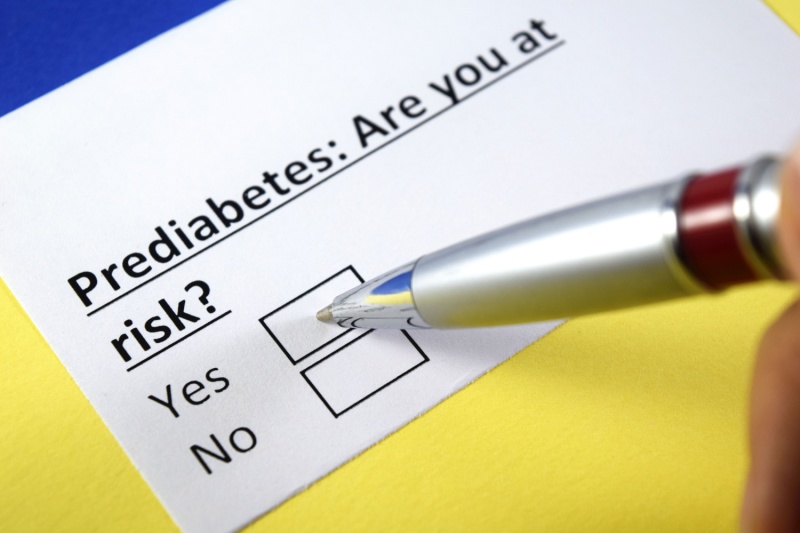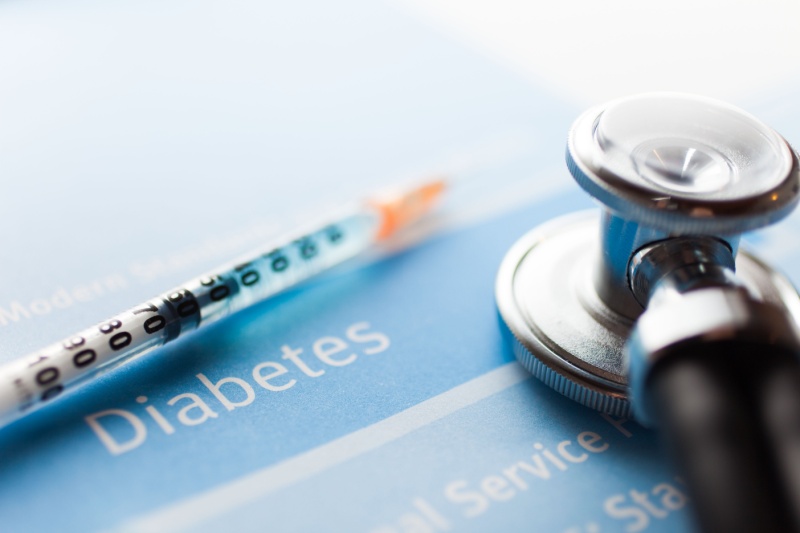Unlike type 2 diabetes, prediabetes isn’t a chronic condition and can be reversed. The glucose released into our bloodstream is used up by our cells for energy. The pancreas produces insulin to get this job done and ultimately balance the glucose levels in our bodies. When our body fails to respond to insulin or stops producing adequate amounts of it, it produces high blood sugar.
What you need to know:
- Understanding prediabetes and diabetes
- Defining prediabetes
- What is diabetes?
- Causes and risk factors of prediabetes and diabetes
- Symptoms and diagnosis of prediabetes and diabetes
- Differences between prediabetes and diabetes
- Risk of complications
- Preventing and managing the progression from prediabetes to diabetes
Understanding prediabetes and diabetes

Having high blood sugar does not mean you have diabetes, but it’s an alarming situation nonetheless. It means that your body is ineffectively utilizing insulin, which can lead to type 2 diabetes if not tackled right away. The difference between prediabetes and diabetes is that the former still has time to prevent serious, chronic complications from occurring.
Defining prediabetes
Prediabetes is a transitional phase where the body shows high blood sugar levels but not high enough, like diabetes. It has been seen over the years that people who take quick action and make healthier changes in their nutrition, physical activity and overall lifestyle can reverse prediabetes. On the other hand, due to negligence, 80% of people with prediabetes can contract type 2 diabetes within a decade.
What is diabetes?
Diabetes is a chronic condition in which the body has excessively high blood glucose levels due to its inability to produce or synthesize insulin. It requires lifelong management and treatment to prevent damage to other organs, such as the heart, kidneys, nerves, and eyes. Anyone is at risk of developing type 2 diabetes, and the triggers can range from genes to poor lifestyle.
Causes and risk factors of prediabetes and diabetes
The causes of prediabetes or diabetes can be traced down to similar characteristics. Only timely intervention can prevent severe health complications. Obesity, age, race, ethnicity, family history, sedentary lifestyle and poor nutrition can all cause prediabetes and, ultimately, diabetes if unchecked.
The risks of unmanaged prediabetes can be a stroke, heart disease, and eventually developing type 2 diabetes. People with diabetes, however, need to tread carefully as uncontrolled diabetes can have life-threatening consequences such as chronic kidney disease, cardiovascular diseases and diabetic retinopathy.
Symptoms and diagnosis of prediabetes and diabetes

Regular blood tests, health checkups and consultations are always a clever way of avoiding chronic diseases or managing them better, especially when there are no apparent symptoms like prediabetes. Due to insulin resistance, some patients may experience dark pigmentation/discoloration or patches around the armpits, neck, elbows, knees and knuckles. Seek immediate help if you experience blurry vision, fatigue, increased thirst and hunger, frequent urination and difficulty healing cuts or sores, as they can be symptoms of type 2 diabetes. Your doctor may advise specialized tests to diagnose your symptoms if necessary.
Differences between prediabetes and diabetes
The critical difference between prediabetes and diabetes is that although high blood sugar levels characterize both, the former can be reversed or managed well to avoid chronic diseases or significantly delay them. Your doctor may recommend medicines along with lifestyle modification for the same.
- Blood sugar levels
Blood sugar levels in your body determine whether you are a diabetic or pre-diabetic. If your blood sugar levels are between 1 to 1.25 grams per liter, you will be classified as a prediabetic. When the number touches 1.26 grams per liter or higher, you will be diagnosed with type 2 diabetes. For an HbA1c test to classify as usual or in the non-diabetic range, the value must be below 5.7%. Anyone with an HbA1c value of 5.7% to 6.4% is considered prediabetic.
- Insulin resistance
Insulin resistance is the body’s inability to use and synthesize insulin effectively. It can lead to a range of health complications, including diabetes, and is usually the result of poor lifestyle and dietary habits. At the moment, over 45% of adults worldwide are believed to be suffering from insulin resistance.
Risk of complications
Since prediabetes can be managed and reversed, it’s less likely to develop serious complications. However, diabetes can become lethal if looked at just as an inconvenience and neglected. Potential complications and life-threatening risks of diabetes include:
- Chronic kidney disease or kidney failure
- Coronary artery disease
- Neuropathy or nerve damage
- Diabetic retinopathy or damage to the retina
- Diabetes coma due to hypoglycemia or hyperglycemia
Reducing diabetes-related complications depends on keeping blood glucose levels in check.
Preventing and managing the progression from prediabetes to diabetes
Prediabetics must focus on making lifestyle changes, as this will most likely be the trigger to prevent them from progressing to type 2 diabetes. An active lifestyle and watching your calories can significantly reduce your chances of developing type 2 diabetes by allowing you to maintain a healthy body weight. In addition, managing stress and getting adequate sleep are crucial for a healthy body and mind.
Remember, it isn’t inevitable that prediabetes will develop type-2 diabetes. You can always take control and make things better.
Stay tuned to the Activ Living Community. Keep up to date with the latest health tips and trends through expert videos, podcasts, articles, and much more in nutrition, fitness, mindfulness, and lifestyle conditions like Asthma, Blood Pressure, Cholesterol, and Diabetes. Activ Living ke saath sahi sehat ki shuruaat ABHIkaro.
You may also be interested in the following blogs:
- How Does Insulin Therapy Make Life Easier For People With Diabetes?
- Sedentary Lifestyle And Diabetes: Transform Passive Life To Active Life
Popular Searches
How to lower blood pressure | Fruits good for liver | Unhealthy foods | Ragi Benefits | Basal Metabolic Rate | Acupressure points for High Blood Pressure | Ayurvedic medicine for blood pressure | How to control cholesterol at home | Homeopathy for Asthma | Biological Age | Home remedies for TB | Natural beta blockers | Negative effects of internet | Types of walking | Blood pressure calculator | Blood sugar calculator | BMI Calculator





 1800-270-7000
1800-270-7000






